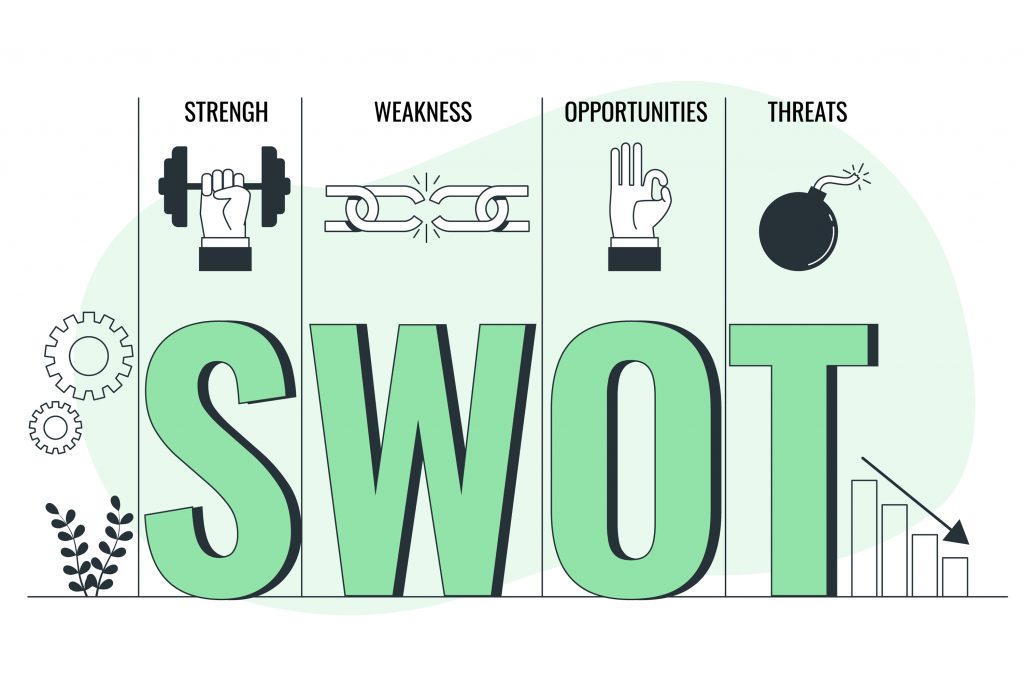Innovating is a word that no longer goes out of fashion, so much so that innovating is essential for any company to stay alive in the market. Anyone who does not seek to reinvent their own business will be replaced faster than they imagine, now learn about some tools for strategic planning for your organization's innovation.
Investing in a company's innovation strategy is vital for running a business, as well as the search for innovative ideas and projects.
The story of Kodak and Blockbuster is no longer news to anyone (because we no longer hear about film development or videotape rental). Innovating is no longer an option, it is a market order and a request from your future customers.
Innovation is a differentiation mechanism in the market so that your company is more competitive. A large portion of the innovations, perhaps more than 95%, are small or incremental.
But this is very good. Through a lot of planning, these less visible items gradually change your routine day after day, transforming your company, your market and your life into something better and more sophisticated.
Your innovation today is certainly the basis for tomorrow's innovations, as you have already noticed. An example that is already in your home is the growth of televisions with 4K technology, something that 10 years ago was only in research laboratories.
Who doesn't want to watch the 2022 World Cup games on a beautiful UHD and 4K screen? Even better if you have the option to stream it on any device, such as a tablet or cell phone, right?
Planning for innovation management is a differentiator
The main and most important step towards innovation is the analysis and definition of which market the company intends to operate with innovation and how this will be achieved. From this point onwards, all the others will be aligned and will continue.
For example, the technology area depends on this item to select resources and check their availability (and their costs, consequently). If we consider it calmly, technology has never been so accessible, but it alone does not guarantee stability or, better yet, the success of your idea.
It will be during strategic planning that the company's objectives will be aligned and the portion, or goal, of each area to achieve this final objective.
Sharing objectives and goals among all employees, from directors to interns, leads to a great commitment on the part of each person in achieving the planned result.
Therefore, strategic planning leaves out what the company's general goals are and how each sector of the company will contribute to this general goal. And, as we said, innovation must be a fixed part of this strategic construction.
An example of a strategic decision in innovation and the market
If your company decides during strategic planning that you should enter a new business segment that is emerging within the software market, such as ERP, what should you do?
The options may be to innovate through the acquisition of a “Startup” to buy the technology already developed. Or, in another model, develop the technology itself.
If the company's decision is to acquire the “Startup”, the decision implies the option not to develop and innovate itself, that is, the company must prepare to better manage the new business and develop products and services based on this new technology.
However, if the company chooses to develop the technology, it may have to hire new employees to supply this new specialty, as well as enter into operational and strategic agreements with universities and research institutes to accelerate the development of this innovative technology.
Each of these strategies has its strengths and weaknesses. And, in their own way, they innovate. How would you rate it? It's worth reflecting!
What does your strategic innovation plan need to have?
A national reference in innovation in Brazil, José Claudio Terra, indicates that the innovation strategy has a scope much more linked to the market, customer needs and the company's positioning than just what is being recommended for innovation.
We will indicate below some of the analyzes and definitions of the tools that are essential in your planning:
1 – Market analysis: competition and trends
For this initial item, one of the extremely useful tools is the use of Porter's five forces. These forces are those that represent all competition within the market. The forces are:
1. Relationship with suppliers;
2. Relationship with buyers;
3. New entrants;
4. Substitute products;
5. Rivalry between established companies;
Porter's five forces can be better understood and visualized when using the SWOT tool. This is a great tool for understanding how all stakeholders in society and those active in the market interrelate. SWOT is an English term that means:

S – Strengths – Strengths;
W – Weakenesses – Weaknesses
O – Opportunities – Opportunities;
T – Threats – Threats.
To use this tool, it is important to bring together a group of people who are aware of the company's strategy, know the market, competitors, laws and regulations in force in the country, among other knowledge. Therefore, the group must be eclectic and with a lot of tacit knowledge.
Tendencies:
The company must be in permanent contact with the market and the new features that are introduced, whether in the market in which the company operates, as well as in parallel ones. A point of attention is to understand technological trends, which change and revolutionize your market with more radical items, and market trends, which are changes in the population's customs and habits. One example was the growth in consumption of classes C and D in recent years.
2 – Identification of needs for innovation in markets or segments
Identifying needs for innovation in markets or segments is a very complex activity, but it needs to be predicted. A tested process recommended in the book Innovation Management (Joe Tidd) is described below and reinforces the need to further understand user experience (UX), another trending term in the market.
Understand the market, the customer and the technology;
Observe users and potential users in real-life situations;
Visualize new concepts and the customers who may use them, using prototypes, models and simulations;
Evaluate and refine prototypes in a series of rapid repetitions;
Implement the new concept for commercialization.
The great advantage of using this strategy is the study of real needs, that is, where they occur and which often go unnoticed by less attentive eyes.
3 – Selected technologies
To assess whether any current or potential innovation can be developed to serve a market or a market niche, portfolio diagnosis can be used.
This analysis is very important to identify the potential for technology innovation compared to the market and competitors. If the technology to be created already has a similar one on the market, it will not have a competitive differentiating factor… and its focus will be efficiency and cost.
However, if it is disruptive, you can create a niche and take advantage of a new and unprecedented market to meet more needs (and new application possibilities).

4 – List of technologies to be developed internally
The strategy for developing new technologies is not always the same, as it depends on many factors, whether internal to the company or the market.
One of the big decisions in this field is whether you are going to develop, hire third-party development or buy the technology?
Items such as: time to implement the product, knowledge of the internal team, institutional partnerships, availability of technology resources on the market are elements of this assessment that need to be carried out by you.
5 – List of partners for technology development
At this stage you must list the universities, research institutes and companies that can develop the necessary technology previously listed for your idea.
6 – List of partners for purchasing technology
A second list is necessary for technologies that are already available on the market. Of course, available technology cannot always be purchased, if it comes from a competitor, for example. But it will serve as a parameter for evaluations.
7 – Technology matrix
The big question that can be asked to the innovation team is: is it worth developing or buying the technology? If it is to be developed, will it be internal or external?
This question can be answered by looking at the company's strategic planning and all the decision-making factors seen in this chapter.
Your matrix must contain team availability, time and costs versus doing it internally, externally or purchasing an item.
8 – Industrial property strategy
Once the technology has been developed, and it is proven that it guarantees a difference in relation to the current state of the art in the industry, it must be protected against the use of competitors. The most commonly used form currently is filing patents.
In Brazil, the competent body for this purpose is the INPI (National Institute of Industrial Property), where it will be possible to file patents at national level. Basically there are patents of the PI, MU or DI type, Find out more in our article on innovation patents.
Above we reinforce and exemplify that planning is the best way to guarantee the success of innovation and its entrepreneurial model. In future materials we will delve even deeper into the tools for creating and developing strategic innovation planning.
And, with your study of the tools, you will be able to carry out your steps step by step to determine the path to be followed with the company's innovation strategy. The tools mentioned in our material are references that can help make your project even more differentiated.
We, at 4C Innovation, are a product development platform that guides inventors, micro, small and large companies in transforming ideas into successful sales products.
Did you like our text? Continue reading our materials, watching videos and subscribe our newsletter to have even more content about innovation to get off the ground and conquer the world.